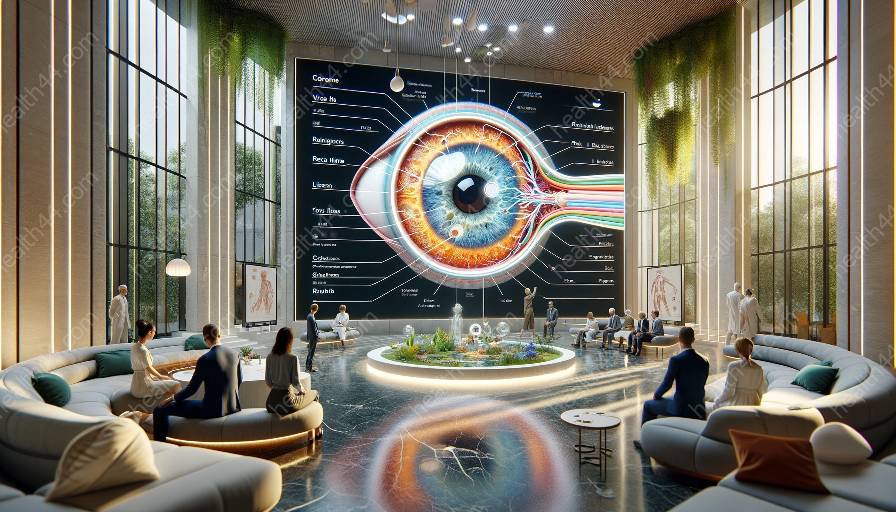The fovea centralis is a vital structure located in the retina of the eye that plays a crucial role in visual acuity. Understanding the significance of the fovea centralis in visual acuity requires an exploration of eye anatomy and its relevance to vision rehabilitation.
Eye Anatomy and Fovea Centralis
The eye is a complex organ with various structures working together to enable the sense of sight. The retina, located at the back of the eye, contains the fovea centralis, which is responsible for sharp, detailed vision. The fovea centralis is a small, central pit in the macula lutea, and it consists of densely packed cone cells, specialized photoreceptor cells that are essential for high-acuity vision. Its location at the center of the macula makes it the region of greatest visual acuity.
The fovea centralis is surrounded by the parafovea and perifovea regions, which also contribute to visual perception but to a lesser extent than the central foveal area. Light entering the eye is focused on the fovea centralis when the gaze is fixed directly on an object, allowing for the clearest and most detailed vision. This region has the highest density of cone cells, enabling the eye to perceive fine details, colors, and textures with precision.
Impact on Visual Acuity
The significance of the fovea centralis in visual acuity lies in its ability to provide the clearest and most detailed vision. When light enters the eye and is focused on the fovea centralis, the densely packed cone cells capture the visual information and send it to the brain for processing. This allows individuals to discern fine details, read small print, and perceive objects in high resolution.
Visual acuity refers to the sharpness and clarity of vision, and it is often measured using a Snellen chart in an eye examination. The ability of the fovea centralis to discern small, closely spaced objects is crucial for activities such as reading, driving, and recognizing faces. Furthermore, the fovea centralis plays a fundamental role in tasks that require precise hand-eye coordination, such as threading a needle or performing delicate manual work.
Fovea Centralis and Vision Rehabilitation
Understanding the significance of the fovea centralis is essential in the context of vision rehabilitation. Individuals with visual impairments, such as macular degeneration or other retinal disorders, may experience a decline in foveal function, leading to a decrease in visual acuity and the ability to perceive fine details.
Vision rehabilitation programs focus on enhancing the remaining visual capabilities of individuals with visual impairments. Techniques such as eccentric viewing, which involves using a non-foveal area of the retina to fixate on objects, can help individuals make the most of their remaining vision. However, the loss of foveal function can pose challenges in achieving optimal visual acuity, emphasizing the importance of understanding the role of the fovea centralis in visual perception.
The Future of Vision Rehabilitation
Advancements in the field of vision rehabilitation continue to offer hope for individuals with visual impairments. Innovative technologies, such as retinal implants and prosthetic devices, aim to restore visual function by directly stimulating the remaining healthy retinal cells, including those in the fovea centralis. These developments underscore the significance of understanding the fovea centralis and its role in visual acuity, as they pave the way for potential interventions to improve the vision of individuals with retinal disorders.
In conclusion, the fovea centralis is of immense significance in visual acuity, as it is responsible for providing the clearest and most detailed vision. The dense concentration of cone cells in the fovea centralis enables individuals to perceive fine details, colors, and textures with precision. Understanding the impact of the fovea centralis on visual acuity is crucial in the fields of eye anatomy and vision rehabilitation, as it informs interventions aimed at optimizing visual function for individuals with visual impairments.





















